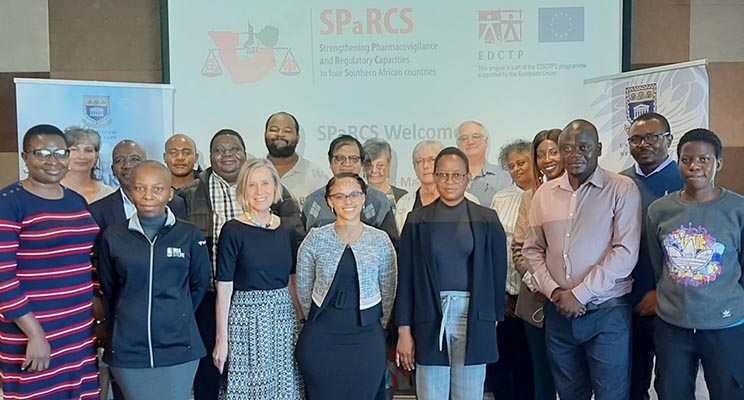SPaRCS Project team meeting

After almost two years of working together, the Strengthening pharmacovigilance and regulatory capacities in four Southern African countries (SPaRCS) project team met for their first in-person meeting in Cape Town from 16-18 March. SPaRCS is a three year project which aims to strengthen pharmacovigilance (PV) systems and clinical trials oversight of national regulatory authorities (NRAs) in Eswatini, Namibia, South Africa, and Zimbabwe. The project started in April 2020, just after the COVID-19 lockdown came into force. Fortunately, access to digital technologies enabled them to meet many of their project milestones during this time.
Over the course of the three days, they worked on Work Packages (WPs) – WP3: Mutual Learning between the four NRAs, and WP4: Raising the profile of NRAs and PV systems. They used the opportunity to reflect together on their activities within these WPs thus far and plan for their third and final year of the project. For WP3, having focused on mutual learning on pharmacovigilance in 2021, they are planning to focus on learnings on ‘clinical trials oversight’ and hope to visit the Medicines Control Authority of Zimbabwe (MCAZ) Regional Centre of Regulatory Excellence (RCORE). In WP4 they will develop a training presentation on adverse drug reaction reporting targeted at community health workers. The training presentation was developed and piloted in Cape Town and will be further piloted and modified for use in the four countries. Supportive documentation and special teaching notes (checklists) to facilitate train the trainer sessions using this training material will also be finalised.
This face-to-face meeting facilitated relationship building and sharing of knowledge and ideas among the team members in a relaxed environment. It enabled them to learn more deeply about each other’s areas of expertise and enabled greater collaborative and shared learning opportunities, in line with the participatory, co-learning and co-creating, approaches of the project.
